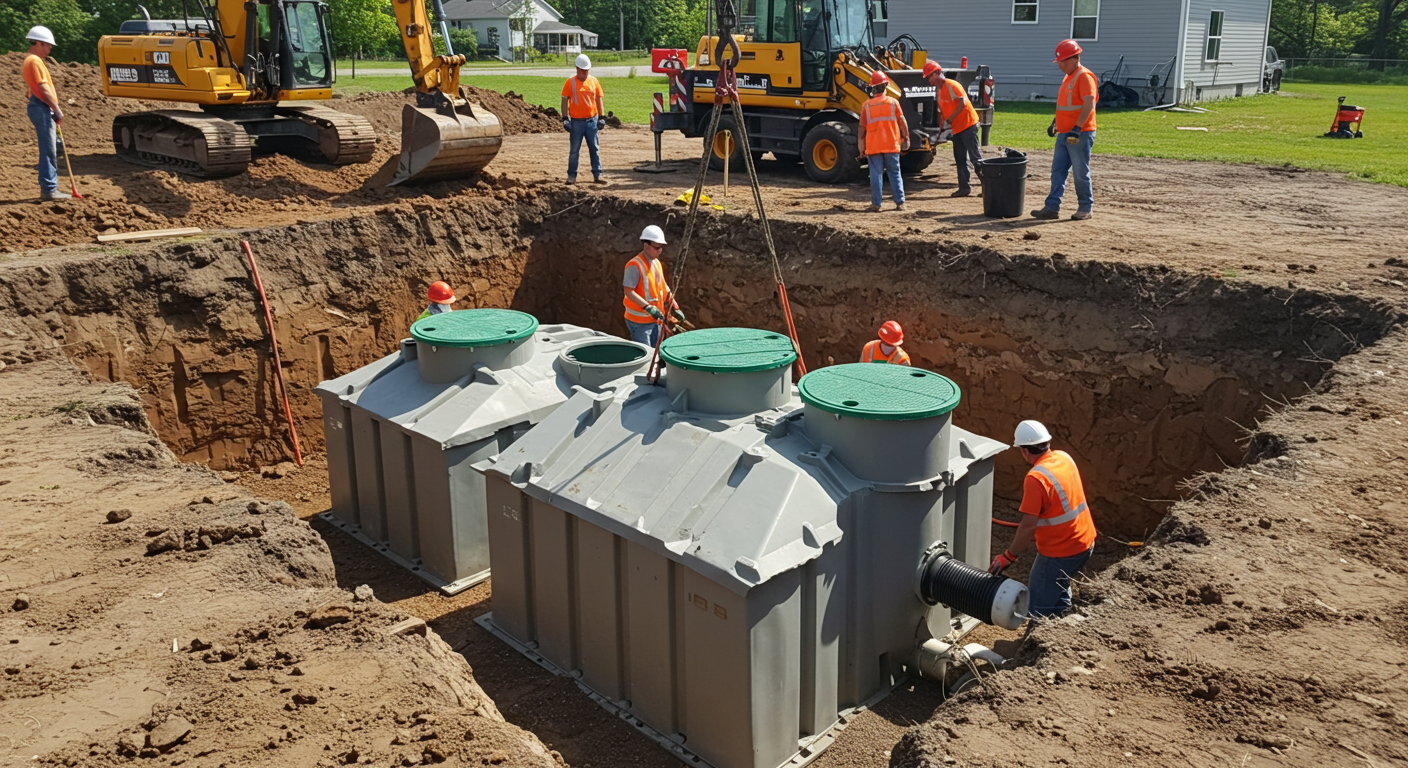
Septic systems serve as lifelines for households not linked to municipal sewage, ensuring that wastewater is effectively managed and treated onsite. Installing a septic system can seem overwhelming, but grasping the process can transform a daunting task into a manageable one. Below, we will explore the septic installation journey, highlighting what you need to know:
Site Evaluation: The Foundation of a Successful Installation
A precise site evaluation lays the groundwork for a successful septic system. This involves assessing various factors critical to the appropriate functioning of the system.
Soil Types and Drainage
- Sandy Soils: Known for their excellent drainage properties, sandy soils are ideal for septic systems.
- Clay Soils: These retain water and can inhibit effective wastewater treatment.
- Loamy Soils: A combination of sand, silt, and clay, loamy soils can offer a balance, but their suitability depends on specific characteristics.
Topography and Water Sources
The land’s slope profoundly affects how wastewater flows. A site with a gentle incline is preferred to aid in wastewater dispersal. Additionally, local regulations typically require a minimum distance between the septic system and water sources, safeguarding against contamination.
Permitting Process: Securing the Green Light
Before any heavy lifting begins, securing the necessary permits is essential. This process varies by locality, but it generally involves:
- Consultation: Engaging local health departments allows you to understand specific requirements and guidelines.
- Plan Submission: You may be required to submit detailed plans of your intended septic system for approval.
Understanding and adhering to these regulations is crucial, as neglecting them can lead to significant complications in the future.
Choosing the Right Septic Tank: A Crucial Decision
The heart of your septic system is the tank itself. Selecting the right tank involves more than simply making a purchase; it entails considering:
- Size: Your tank’s size should be tailored to your household’s needs, typically based on the number of bedrooms and estimated water usage.
- Material: Common materials include concrete, fiberglass, and plastic, each with its advantages and drawbacks. For instance, concrete is durable, while fiberglass can be less prone to cracking.
The Installation Steps: Bringing Your Septic System to Life
With permits in hand, it’s time to delve into the actual installation process. Here are the critical stages:
Excavation
The initial step involves digging a hole sized adequately for both the septic tank and associated drain field. This excavation must adhere to dimensions specified by local guidelines.
Tank Placement and Pipe Connection
Once excavated, the tank is carefully positioned in the hole, ensuring it’s level. Subsequently, the inlet pipe, connecting the home to the tank, and the outlet pipe, leading to the drain field, are installed.
Drain Field Installation
The drain field plays a vital role in disposing of pre-treated wastewater. This area typically consists of perforated pipes set within gravel trenches, aiding in dispersal and absorption. Proper design and installation are crucial to prevent any backflow or pooling issues.
Backfilling and Covering
After installation, the tank area is backfilled with soil, ensuring that no debris or boulders obstruct it. This protective layer aids in the tank’s long-term stability.
Final Inspection
Before covering everything with soil, a final inspection by local authorities is usually required. This ensures the system meets regulations and is functioning as intended. Documentation of the installation process will help facilitate this inspection.
Avoiding Common Pitfalls: Tips for Smooth Installation
Even with all best practices in place, potential pitfalls can occur, undermining the effectiveness of your septic system:
- Ignoring Regulations: Skipping the permitting process can lead to fines or forced removal.
- Tank Size Underestimation: An inadequately sized tank results in frequent backups and potential failure.
- Poor Drain Field Design: If not suitably designed, drain fields may cause wastewater pooling, harming health and the environment.
Maintenance: Key to Longevity
After the installation, regular maintenance is critical. Schedule periodic inspections and pump the tank every 3-5 years, depending on usage. Keeping track of water use and avoiding the flushing of non-biodegradable items can also prevent future complications.
In summary, understanding the septic system installation process is crucial for effective wastewater management at your property. By investing the time to research and prepare, you can ensure a successful installation and operation.
If you’re seeking assistance or expertise in septic system installation, look no further than Woodhaven Excavating and Lot Clearing, the professionals who can guide you every step of the way.

